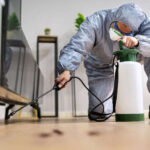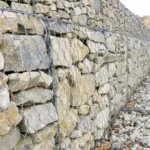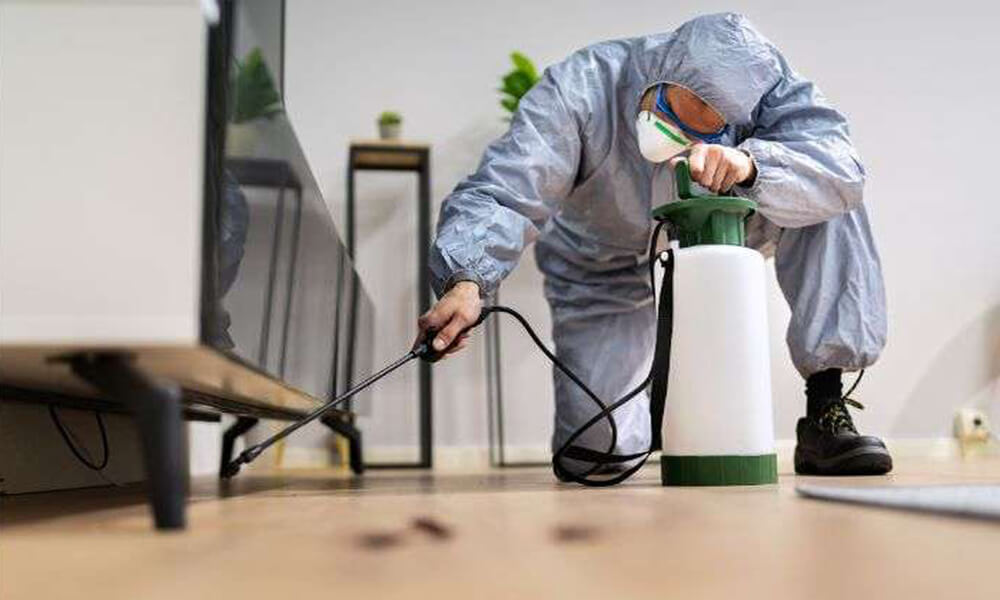When you call in professionals to handle a pest infestation, it’s natural to wonder — what exactly should you do during a pest control treatment? Whether it’s ants in the kitchen, termites in the walls, or rodents sneaking through the attic, pest control treatments involve chemicals and procedures that require care. Let’s discuss what safety measures you need to take during pest control to protect yourself, your family, and your pets.
Understanding the Purpose of a Pest Control Treatment
Before diving into what you should do during the process, it helps to understand what’s really happening. Pest control treatments use specialized products to target and eliminate unwanted insects, rodents, or other pests from your home or office.
These treatments can be chemical-based, organic, or integrated pest management (IPM) systems that combine multiple methods. Depending on the type of pests and the severity of the problem, the process might involve sprays, baits, traps, or fumigation.
Knowing the type of treatment your pest control team will use helps you prepare and follow safety protocols more effectively.
Preparing Before the Treatment Begins
Preparation is key to ensuring safety during pest control. Here’s what you should do before the team arrives:
1. Declutter and Clean the Area
Pest control works best when surfaces are clear. Move furniture away from walls, clear out cabinets if treating for cockroaches or ants, and ensure there’s no clutter blocking access to infested areas.
A clean and open space allows technicians to treat effectively and minimizes your contact with treated areas afterward.
2. Store Food, Utensils, and Dishes Safely
Chemicals used in pest control should never come in contact with food items or cooking utensils. Store all food in sealed containers, pack away dishes, and clear countertops.
If treatment is happening in the kitchen, empty your cabinets and refrigerator top areas so that the pest control team can spray efficiently.
3. Cover or Remove Pet Supplies
Pets are more sensitive to chemicals than humans. Remove food bowls, litter boxes, cages, and toys before the treatment begins.
If possible, arrange to keep your pets outside the home until the treated areas are fully aired out and safe.
4. Protect Aquariums and Indoor Plants
If you have fish tanks, cover them tightly with plastic wrap and turn off air pumps during treatment. Likewise, move your indoor plants outdoors or cover them securely, as pesticide residue can harm delicate leaves and roots.
What to Do During the Pest Control Treatment
Now let’s focus on what happens once the pest control experts arrive. Many homeowners wonder — should you stay inside, or is it better to leave the property during treatment? The answer depends on the type of treatment being used.
1. Know When to Stay and When to Leave
For mild treatments, such as ant or cockroach sprays, you can usually stay in the house but must avoid treated areas until the solution dries.
However, for stronger treatments like fumigation or termite control, it’s best to vacate your home for several hours or even a few days. Always follow your exterminator’s instructions — they know the safety limits of their products.
2. Keep Distance from Treated Areas
Even if you’re home during treatment, maintain a safe distance. Don’t walk through freshly sprayed areas or touch surfaces until they are dry.
Remember, pest control chemicals are designed to be lethal to pests. Direct contact can cause skin irritation or allergic reactions in humans.
3. Allow Proper Ventilation
Good airflow helps reduce any lingering smell of pesticides and speeds up drying. Keep windows open and fans running during and after the treatment, if advised by your technician.
Ventilation is especially crucial if you have children, elderly family members, or anyone with respiratory issues.
4. Follow the Technician’s Lead
The pest control professionals will guide you on what to do during and after the process. Don’t hesitate to ask questions such as:
- How long should I stay out of the treated area?
- When can I clean the surfaces again?
- Is it safe for pets and kids to return after a certain time?
Being informed helps you stay safe and ensures the treatment remains effective.
Post-Treatment Safety Measures
Once the pest control team finishes their work, you might be eager to clean up and return to normal life. However, post-treatment care is just as important as the treatment itself.
1. Wait Before Cleaning
Don’t rush to clean treated surfaces immediately. Wiping them down too soon may remove the pesticide before it’s had time to work.
Your pest control company will tell you how long to wait before resuming your usual cleaning routine — typically anywhere from 24 to 48 hours.
2. Dispose of Waste Safely
If you had to discard old food, pest droppings, or infested materials, dispose of them in sealed bags. Wash your hands thoroughly afterward and avoid touching your face or eyes during the cleanup process.
3. Keep Monitoring Pest Activity
After treatment, you may still notice some pest movement. This is normal — some pests take time to die or emerge from hiding as the chemicals take effect.
If you still see activity after a week or two, contact your pest control company for a follow-up. They may recommend a second treatment depending on the pest type and infestation level.
4. Reintroduce Pets and Children Gradually
Before letting pets or children re-enter, make sure all treated areas are dry and well-ventilated. For extra safety, wipe down pet feeding areas or children’s play zones after the waiting period.
Additional Tips for Your Safety and Comfort
Here are a few extra precautions that can make your pest control experience smooth and worry-free:
1. Wear a Mask If You’re Sensitive to Smells
Even eco-friendly pest control products can have a noticeable odor. If you or anyone in your family has allergies, asthma, or chemical sensitivity, wear a mask or leave the treated area entirely.
2. Keep the Communication Open
A good pest control company will give you written instructions before and after treatment. Don’t hesitate to clarify anything that seems unclear — it’s better to ask than to assume.
3. Avoid Touching Walls or Floors for a While
After spraying, it’s best not to touch or move furniture against treated walls. Give it at least 24 hours before rearranging your space.
4. Keep Track of Treatment Records
Documenting what treatment was done and when helps in future maintenance. It’s also useful if you rent or plan to sell your home — it shows that the property has been professionally managed.
Why Following Safety Protocols Matters
Some people underestimate the importance of following pest control safety guidelines. But here’s why it’s crucial:
- It prevents health risks like skin irritation, nausea, or breathing difficulties.
- It protects pets, plants, and children who are more sensitive to chemical exposure.
- It ensures that the treatment remains effective long enough to break the pest cycle.
Neglecting these precautions can reduce the effectiveness of the treatment or even lead to re-infestation sooner than expected.
Can You Use DIY Pest Control Instead?
Many homeowners wonder if they can just handle pest control themselves. While DIY sprays can help for minor infestations, professional pest control offers deeper, long-term solutions.
Let’s discuss — would you rather deal with pests temporarily or eliminate them completely? Professionals have access to stronger, safer chemicals and understand pest biology and hiding patterns better than any store-bought product can compensate for.
So, while DIY methods can serve as a quick fix, hiring professionals ensures safety, precision, and peace of mind.
Creating a Pest-Free and Safe Environment
Once your pest control treatment is complete and you’ve followed all the safety steps, it’s time to focus on prevention.
Simple habits like keeping food sealed, cleaning regularly, fixing leaks, and sealing entry points can go a long way in preventing future infestations. Regular professional inspections every few months can also catch early signs before they become serious problems.
Remember, pest control isn’t just about getting rid of pests — it’s about protecting your home, health, and comfort.
So, the next time you schedule a treatment, follow these safety protocols and take an active role in the process. By doing so, you’ll not only ensure the treatment’s success but also create a cleaner, healthier living space for everyone.With allseasonspest.com, maintaining a pest-free home becomes easier thanks to their expert guidance and follow-up services in pest control in Tacoma, WA. Customers consistently praise their professionalism and effective solutions.

 How Realtors Can Sell Homes Faster with Staging
How Realtors Can Sell Homes Faster with Staging  How Often Should a Roof Be Replaced?
How Often Should a Roof Be Replaced?  What to Do During a Pest Control Treatment: Safety Protocols
What to Do During a Pest Control Treatment: Safety Protocols  Segmental Block vs. Poured Concrete Retaining Walls: A Comparison
Segmental Block vs. Poured Concrete Retaining Walls: A Comparison  Narra Residences Unveil Supreme Elegance in Singapore’s Dairy Farm Walk
Narra Residences Unveil Supreme Elegance in Singapore’s Dairy Farm Walk  Emergency Roof Repair in Wyoming: What to Do When Disaster Strikes
Emergency Roof Repair in Wyoming: What to Do When Disaster Strikes  Red Flags to Watch Out for When Choosing a Real Estate Agent
Red Flags to Watch Out for When Choosing a Real Estate Agent  How Site Preparation Impacts the Success of Concrete Construction
How Site Preparation Impacts the Success of Concrete Construction  Florida’s Venomous Spiders: What to Know and When to Worry
Florida’s Venomous Spiders: What to Know and When to Worry 